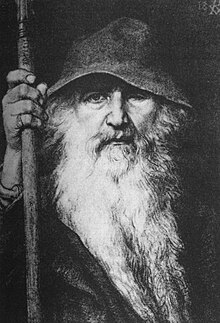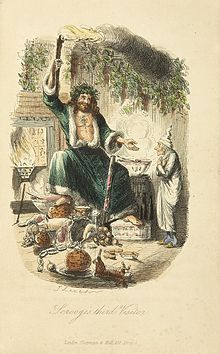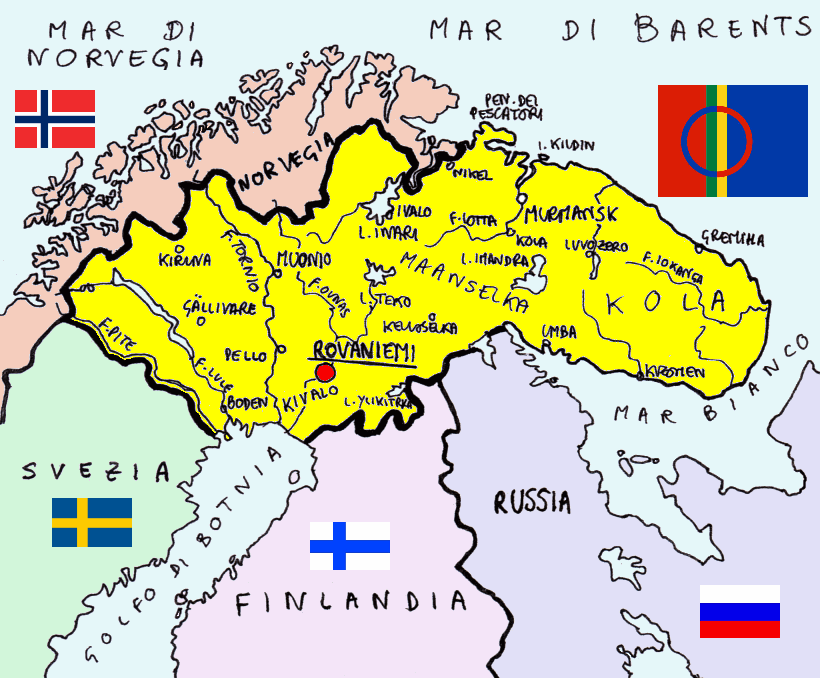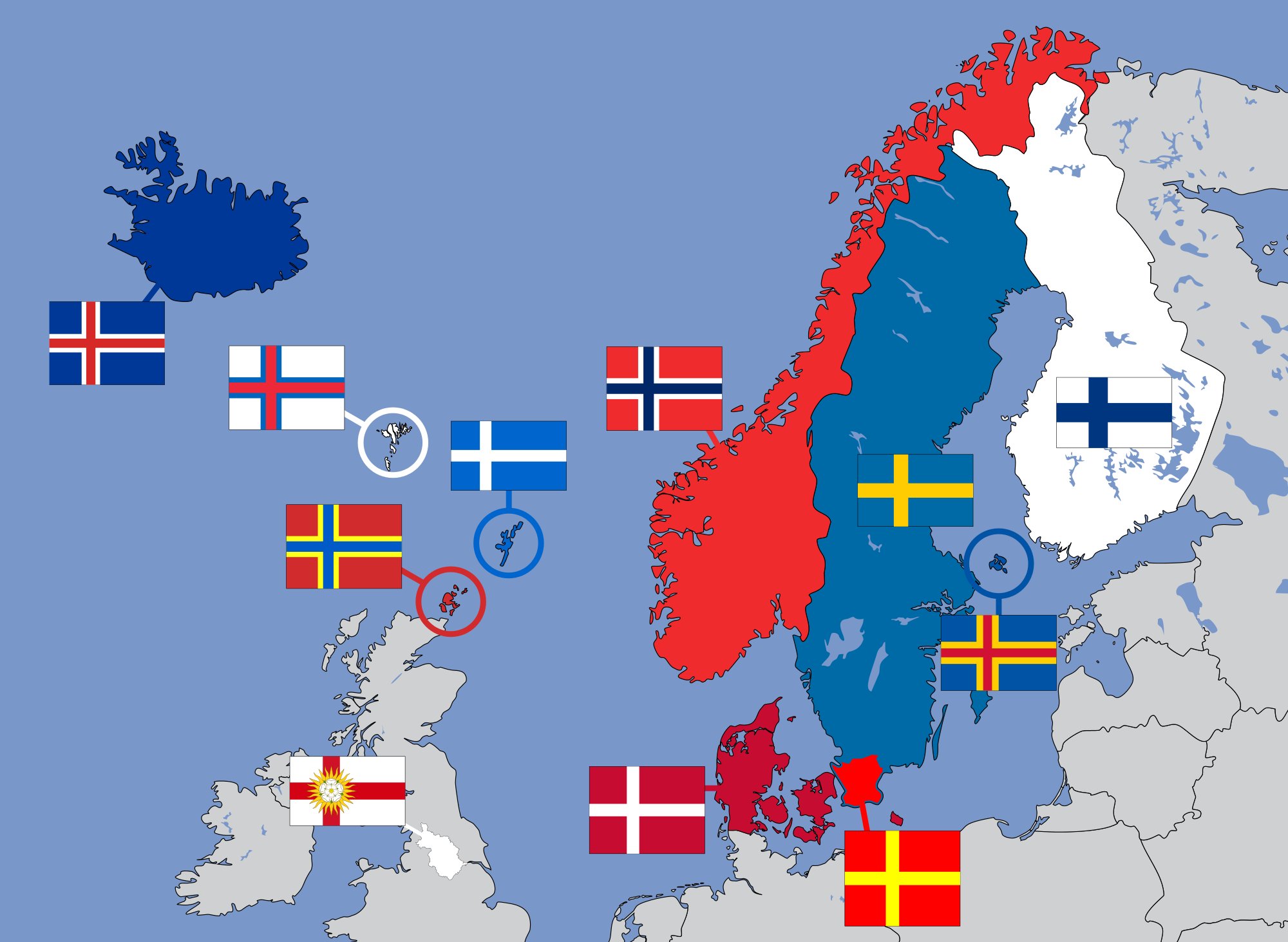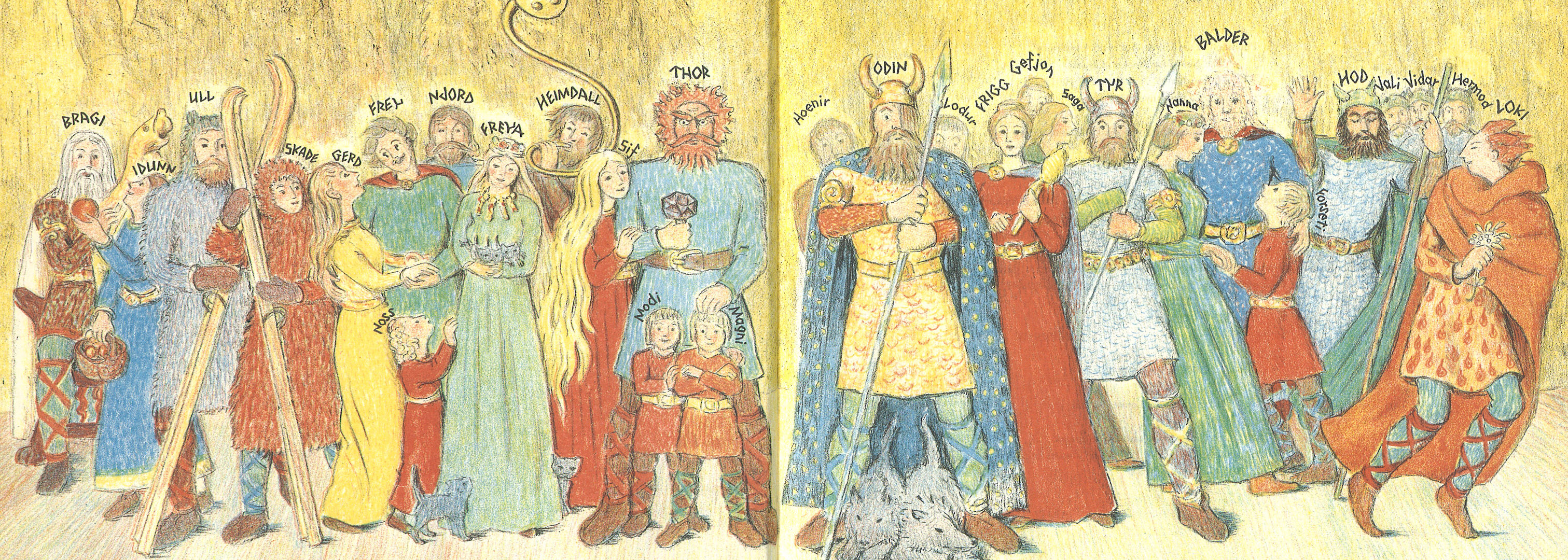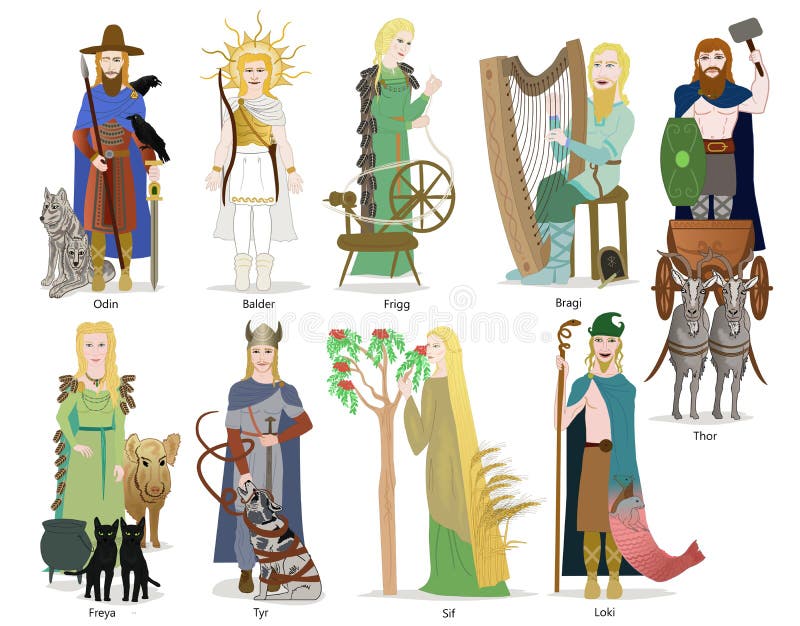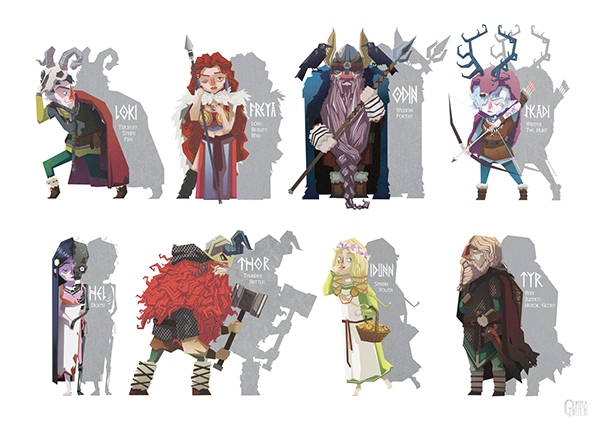Babbo Natale è una figura presente in molte culture che distribuisce i doni ai bambini, di solito la sera della vigilia di Natale. Babbo Natale è un elemento importante della tradizione natalizia della civiltà occidentale, oltre che in America, in Giappone ed in altre parti dell'Asia orientale.
Tutte le versioni del Babbo Natale moderno, chiamato Santa Claus nei paesi anglofoni, derivano principalmente dallo stesso personaggio storico: san Nicola, vescovo di Myra (oggi Demre, città situata nell'odierna Turchia), di cui per esempio si racconta che ritrovò e riportò in vita cinque fanciulli, rapiti ed uccisi da un oste, e che per questo era considerato il Protettore dei bimbi. L'appellativo Santa Claus deriva da Sinterklaas, nome olandese di san Nicola.
San Nicola di Myra, un vescovo cristiano del IV secolo. Myra era una città della Lycia, una provincia dell'Impero bizantino che si trova nell'attuale Anatolia, in Turchia[1].
In Europa (in particolare nei Paesi Bassi, in Belgio, Austria, Svizzera, Germania, Repubblica Ceca, Slovenia ed in alcune parti d'Italia) viene ancora rappresentato con abiti vescovili. Le Reliquie di san Nicola furono parte traslate a Bari, narra una leggenda da alcuni pescatori[2][3], ma in realtà furono dei mercanti a trafugarle da Myra nel 1087 e per ospitarle fu costruita una basilica, poggiando le fondamenta su una preesistente struttura, nell'anno stesso. Il luogo, la basilica di san Nicola di Bari, è da allora meta di pellegrinaggi fra i fedeli[4]. Parte delle Sante Reliquie, rimaste a Myra, furono in seguito rinvenute dai veneziani e traslate nella chiesa ed abbazia di san Nicolò a Lido di Venezia, l'omero sinistro si trova tuttora quasi integro a Rimini ed altre ossa sono sparse per l'Europa.
San Nicola è considerato patrono di marinai, mercanti, arcieri, bambini, prostitute, farmacisti, avvocati, prestatori di pegno, detenuti.[5] È anche il santo patrono delle città di Bari (compatrono assieme a san Sabino), Amsterdam e della Russia[6]. In Grecia san Nicola viene talvolta sostituito da san Basilio Magno (Vasilis), un altro vescovo del IV secolo originario di Cesarea.
Nei Paesi Bassi, San Nicola (Sinterklaas tradotto in olandese) viene festeggiato annualmente il 5 dicembre (la vigilia del giorno dedicato a questo santo), data in cui si distribuiscono doni; in Belgio, Polonia, Lussemburgo e Francia del nord (Fiandre francesi, Lorena e Artois), i medesimi festeggiamenti si svolgono il giorno successivo. Tali celebrazioni hanno dato origine al mito ed al nome di Santa Claus, nelle sue diverse varianti.[7]
L'equivalente di Babbo Natale in questi paesi è Kerstman (letteralmente "uomo di Natale"). In alcuni villaggi delle Fiandre, in Belgio, si celebra la figura, pressoché identica, di san Martino di Tours (Sint-Maarten)[8]. In molte tradizioni della Chiesa ortodossa, san Basilio porta i doni ai bambini a Capodanno, giorno in cui si celebra la sua festa.
Folklore germanico
Prima della conversione al cristianesimo, il folclore dei popoli germanici, incluso quello inglese narrava che il dio Odino (Wodan) ogni anno tenesse una grande battuta di caccia nel periodo del solstizio invernale (Yule), accompagnato dagli altri dei e dai guerrieri caduti[9].
La tradizione voleva che i bambini lasciassero i propri stivali nei pressi del caminetto, riempendoli di carote, paglia o zucchero per sfamare il cavallo volante del dio, Sleipnir. In cambio, Odino avrebbe sostituito il cibo con regali o dolciumi.[10] Questa pratica è sopravvissuta in Belgio e Paesi Bassi anche in epoca cristiana, associata alla figura di san Nicola.
I bambini, ancor oggi, appendono al caminetto le loro scarpe piene di paglia in una notte d'inverno, perché vengano riempite di dolci e regali da san Nicola - a differenza di Babbo Natale, in quei luoghi il santo arriva ancora a cavallo. Anche nell'aspetto, quello di vecchio barbuto dall'aria misteriosa, Odino era simile a san Nicola (anche se il dio era privo di un occhio).
La tradizione germanica arrivò negli Stati Uniti d'America attraverso le colonie olandesi di New Amsterdam, rinominata dagli inglesi in New York, prima della conquista britannica del XVII secolo, ed è all'origine dell'abitudine moderna di appendere una calza al caminetto per Natale, simile per certi versi a quella diffusa in Italia il 6 gennaio all'arrivo della Befana[11].
Un'altra tradizione folclorica delle tribù germaniche racconta le vicende di un sant'uomo (in alcuni casi identificato con san Nicola) alle prese con un demone , lo Yule Goat (che può essere, di volta in volta, un diavolo, un troll o la figura di Krampus) o un oscuro uomo che uccideva nei sogni (Blackman o pitchman). La leggenda narra di un mostro che terrorizzava il popolo insinuandosi nelle case attraverso la canna fumaria durante la notte, aggredendo e uccidendo i bambini in modo orribile.
Il sant'uomo si pone alla ricerca del demone e lo cattura imprigionandolo con dei ferri magici o benedetti (in alcune versioni gli stessi che imprigionarono Gesù prima della crocifissione, in altri casi quelli di san Pietro o san Paolo). Obbligato ad obbedire agli ordini del santo, il demone viene costretto a passare di casa in casa per fare ammenda portando dei doni ai bambini. In alcuni casi la buona azione viene ripetuta ogni anno, in altri il demone ne rimane talmente disgustato da preferire il ritorno all'inferno.
Altre forme del racconto presentano il demone convertito agli ordini del santo, che raccoglie con sé gli altri elfi e folletti, diventando quindi Babbo Natale. Una diversa versione olandese racconta, invece, che il santo viene aiutato da schiavi Mori, che vengono rappresentati di solito dal personaggio di Zwarte Piet (Pietro il nero), analogo dell'italiano Uomo nero. In questi racconti Zwarte Piet picchia i bambini con un bastone o li rapisce per portarli in Spagna nel suo sacco (un tempo l'Andalusia era sotto il dominio dei Mori).
In Germania, lo stesso racconto trasforma il personaggio in Pelznickel o Belsnickle (Nicola Peloso), che va a trovare i bambini cattivi nel sonno. Il nome deriva dall'aspetto di enorme belva dovuto al fatto che è interamente ricoperto di pelliccia.


Folclore islandese
Gli islandesi amano dire che da loro ci sono ben 13 Babbo Natale perché la loro tradizione di doni a Natale è basata su 13 folletti, chiamati Jólasveinar, i cui nomi derivano dal tipo di attività o di cibo che preferiscono: Stekkjastaur, Giljagaur, Stúfur, Þvörusleikir, Pottaskefill, Askasleikir, Hurðaskellir, Skyrjarmur, Bjúgnakrækir, Gluggagægir, Gáttaþefur, Ketkrókur e Kertasníkir.
Una volta all'anno, due settimane prima di Natale, questi folletti fanno prima il bagno nelle acque calde delle sorgenti del lago di Niva, quindi lasciano le grotte dove abitano per portare ai bambini islandesi buoni dei doni. Questi vengono messi nelle scarpe che i bambini hanno lasciato sotto le finestre. In pratica, i bambini islandesi, se sono stati buoni, ricevono tredici regali, uno per ogni giorno delle due settimane che precedono il Natale. Questi folletti, tuttavia, possono essere dispettosi e a volte si divertono a fare scherzi o a spiare gli umani. Inoltre, se il bambino ha fatto il cattivo, riceve al posto dei doni delle patate.[12]
Evoluzione moderna
Il babbo Natale di oggi riunisce le rappresentazioni premoderne del portatore di doni, di ispirazione religiosa o popolare, con un personaggio britannico preesistente. Quest'ultimo risale almeno al XVII secolo, e ne sono rimaste delle illustrazioni d'epoca in cui è rappresentato come un signore barbuto e corpulento, vestito di un mantello verde lungo fino ai piedi e ornato di pelliccia. Rappresentava lo spirito della bontà del Natale, e si trova nel Canto di Natale di Charles Dickens sotto il nome di Spirito del Natale presente[13].
Santa Claus ha origine da Sinterklaas, il nome olandese del personaggio fantastico derivato da san Nicola, che viene chiamato anche Sint Nicolaas; questo spiega anche l'esistenza di diverse varianti inglesi del nome (Santa Claus, Saint Nicholas, St. Nick).
Gli abiti di Sinterklaas sono simili a quelli di un vescovo; porta una mitra (un copricapo liturgico) rossa con una croce dorata e si appoggia ad un pastorale. Il richiamo al vescovo di Mira è ancora evidente. Sinterklaas ha un cavallo bianco con il quale vola sui tetti; i suoi aiutanti scendono nei comignoli per lasciare i doni (in alcuni casi nelle scarpe dei bambini, lasciate vicino al caminetto); arriva in piroscafo dalla Spagna ed è accompagnato da Zwarte Piet. Una parte essenziale nella trasformazione di san Nicola in Babbo Natale spetta a Clement Clarke Moore, scrittore e linguista di New York, il quale nel 1823 scrisse la poesia A Visit from Saint Nicholas nella quale rappresentò il santo di origine anatolica come un elfo rotondetto, con barba bianca, vestiti rossi orlati di pelliccia, alla guida di una slitta trainata da renne e latore di un sacco pieno di giocattoli. Per il Natale del 1862 l'illustratore Thomas Nast raffigurò, sulla rivista statunitense "Harper's Weekly, Babbo Natale con giacca rossa, barba bianca e stivali.
La renna appare con Santa Claus poiché la tradizione lo ha fatto un personaggio proveniente dal Nord Europa. La renna era sacra a Isa o Disa la dea Grande Madre degli Scandinavi. Nel nord Europa la renna assume spesso il significato di simbolo lunare, come tutti gli altri cervidi, perciò ha ruoli funerari e di guida delle anime dei defunti nell'oltretomba, ma soprattutto ha ruoli notturni per cui è collegata a Santa Claus che giunge di notte portando doni.[14]
Le strenne che vengono regalate in questa ricorrenza sono spesso accompagnate da poesie, talvolta molto semplici ed, in altri casi, elaborate ed ironiche ricostruzioni del comportamento di chi le riceve durante l'anno trascorso. I regali veri e propri, in qualche caso, sono addirittura meno importanti dei pacchetti in cui sono contenuti, di solito molto sgargianti ed elaborati; quelli più importanti, spesso, sono riservati al mattino seguente. Anche se la spinta commerciale verso il Natale è presente anche nei Paesi Bassi, la distribuzione tradizionale dei regali viene compiuta da Sinterklaas il 6 dicembre.
Anche in altri paesi questa figura di san Nicola ha subito gli adattamenti necessari per uniformarsi al folklore locale. Ad esempio, nei paesi nordici sopravvive ancora l'immagine pagana della "capretta di Yule" (in svedese julbock), che porta i regali la Vigilia di Natale, e le decorazioni natalizie costituite da caprette di paglia sono molto diffuse. In tempi più recenti, però, sia in Svezia che in Norvegia il portatore di doni viene identificato con Tomte o tomtenisse, un'altra creatura del folklore locale. In Finlandia, la capretta di Yule viene chiamata joulupukki.
Secondo alcuni il vestito rosso di Babbo Natale sarebbe opera della Coca-Cola: originariamente infatti, tale vestito era verde, sarebbe divenuto rosso solo dopo che, negli anni '30, l'azienda utilizzò Babbo Natale per la sua pubblicità natalizia, e lo vestì in bianco e rosso, come la scritta della sua famosa bibita.[15] Questa teoria non è però da ritenersi corretta, siccome storicamente la Coca-Cola non fu la prima ad usare la figura moderna di Babbo Natale nelle sue pubblicità, ma venne preceduta in questo dalla White Rock Beverages, per la vendita di acqua minerale nel 1915 e per la vendita di ginger ale nel 1923.[16] Ancor prima di queste pubblicità, la figura di Babbo Natale apparve vestita di rosso e bianco in alcune copertine del periodico umoristico statunitense Puck, tra la fine del XIX e l'inizio del XX secolo[17], nonché nelle illustrazioni di raccolte di canzoni natalizie[18]. Possiamo inoltre trovare un Babbo Natale vestito di rosso in una cartolina russa dei primi del '900 [19].
Dimora di Babbo Natale
La dimora tradizionale di Babbo Natale cambia a seconda delle tradizioni. Negli Stati Uniti si sostiene che abiti al Polo Nord (situato per l'occasione in Alaska) mentre in Canada il suo laboratorio è indicato nel nord del paese[20]; in Europa è più diffusa la versione finlandese che lo colloca in un villaggio vicino alla ben più grande città finlandese di Rovaniemi, in Lapponia, esattamente sul Circolo Polare Artico[21]. Secondo i norvegesi la sua residenza è Drøbak, dove si trova l'ufficio postale di Babbo Natale. Altre tradizioni parlano di Dalecarlia, in Svezia, e della Groenlandia. Nei paesi dove viene identificato con San Basilio viene talvolta fatto abitare a Cesarea in Cappadocia.
Con l'avvento di Internet, sono stati pubblicati alcuni siti web affinché i bambini e gli adulti interessati potessero simbolicamente seguire via radar il percorso di Babbo Natale.[22] In realtà si tratta di un jet della US Air Force che parte da una base canadese per arrivare a Città del Messico, ma l'intento di seguire le gesta di Babbo Natale sono di molto precedenti. Ad esempio, nel 1955 Sears Roebuck, un grande magazzino di Colorado Springs, negli Stati Uniti, distribuì ai bambini il fantomatico numero di telefono di Babbo Natale, da chiamare il giorno della vigilia. Per un errore di stampa il numero corrispondeva però al comando della difesa aerea, che allora si chiamava CONAD (Continental Air Defense Command), un precursore del NORAD (North American Aerospace Defense Command). Harry Shoup, il comandante di turno quella sera, quando cominciò a ricevere le prime telefonate dei bambini si rese conto dell'errore e disse loro che sui radar c'erano davvero dei segnali che mostravano Babbo Natale in arrivo dal Polo Nord.
Dal 1958, anno di creazione del NORAD, statunitensi e canadesi hanno approntato un programma congiunto di monitoraggio di Babbo Natale, che ora è disponibile sul sito web del comando della difesa aerea[23]. Allo stesso modo, molte stazioni televisive locali sparse per il Canada e gli Stati Uniti danno conto ai propri telespettatori della posizione di Babbo Natale, facendolo seguire dai propri meteorologi.
Sono anche disponibili alcuni siti web che seguono Babbo Natale tutto l'anno, mostrando le attività che si svolgono presso la sua fabbrica di giocattoli. In molti casi sono pubblicati anche indirizzi e-mail a cui inviare una versione più moderna delle letterine cartacee a Babbo Natale.
Vigilia di Natale
Negli Stati Uniti la tradizione vuole che la sera della vigilia di Natale si lascino un bicchiere di latte e dei biscotti per Babbo Natale[24]; in Inghilterra il suo pasto consiste invece di mince pie e sherry. I bambini inglesi e statunitensi lasciano anche fuori casa una carota per le renne di Babbo Natale; un tempo veniva detto loro che se non fossero stati buoni tutto l'anno avrebbero trovato nella calza un pezzo di carbone al posto dei dolci.
Secondo la tradizione olandese e spagnola di Sinterklaas, invece, i bambini "mettono fuori la scarpa", ovvero riempiono una scarpa con del fieno e una carota e prima di andare a dormire la lasciano fuori di casa (in alcuni casi il rito viene fatto diverse settimane prima della sera di San Nicola, la sinterklaas avond).
La mattina del giorno successivo il fieno e la carota sono stati sostituiti da un regalo, spesso una figurina di marzapane. Ai bambini cattivi si diceva che avrebbero trovato una fascina, ma questa usanza ormai è stata abbandonata.
Lettera a Babbo Natale
L'abitudine di scrivere una lettera a Babbo Natale è una tradizione natalizia che risale a molto tempo fa. Le lettere contengono di solito una lista dei giocattoli desiderati e la dichiarazione di essere stati buoni.
In molti paesi, le poste accettano le lettere che i bambini scrivono a Babbo Natale; in alcuni casi le risposte vengono fornite dagli stessi impiegati postali o da volontari. In Canada, ad esempio, è stato predisposto un apposito codice postale per le lettere indirizzate a Babbo Natale: H0H 0H0[25] (in riferimento all'espressione "ho ho ho!" di Babbo Natale) e dal 1982 sono oltre 13.000 gli impiegati delle poste canadesi che si sono offerti volontari per rispondere alle lettere. In altri casi sono associazioni caritatevoli dedicate all'infanzia a rispondere alle lettere che vengono dalle zone più povere o dagli ospedali pediatrici, per dare ai bambini dei doni che altrimenti non potrebbero ricevere.
Canzoni di Natale
Nel corso degli anni la figura di Babbo Natale ha ispirato molte canzoni e persino alcune opere per orchestra. Già nel 1853 Louis Antoine Jullien compose un'opera dal titolo Santa Claus, che fu rappresentata a New York ed ottenne alterni successi.[26] Fra le canzoni più note che hanno come argomento Babbo Natale, figurano:
- Joy to the world (XVIII sec.)
- Up on the Housetop, melodia tradizionale[27]
- Jolly Old St. Nicholas, melodia tradizionale[28]
- Santa Claus Is Coming to Town (1935) di J. Fred Coots e Haven Gillespie
- Petit Papa Noël (1946) di Raymond Vinci ed Henri Martinet, incisa originariamente da Tino Rossi
- Here Comes Santa Claus (1947) di Gene Autry e Oakley Haldeman
- I Saw Mommy Kissing Santa Claus (1952) di Tommie Connor, incisa originariamente da Jimmy Boyd
- Santa Baby (1953) di Joan Javits, Philip Springer e Tony Springer, cantata da Eartha Kitt
- Must Be Santa (1960) di William Fredericks e Hall Moore, portata al successo da Mitch Miller and the Gang
- Little Saint Nick (1963) di Brian Wilson, cantata dai The Beach Boys
- I Believe in Father Christmas (1977) di Greg Lake e Peter Sinfield, cantata da Emerson, Lake & Palmer
- The Night Santa Went Crazy (1996) di Weird Al Yankovic (satirica)[29]
- Adeste fideles (XVIII sec.)
Babbo Natale nei centri commerciali
Nella tradizione anglosassone, Babbo Natale è anche un personaggio in costume che staziona nei grandi magazzini o nei centri commerciali, o anche alle feste dei bambini. Di solito è interpretato da un attore con un gruppo di figuranti che lo aiutano, vestiti da elfi o con altri costumi folcloristici (questi ultimi sono spesso impiegati degli stessi grandi magazzini, o personale assunto per l'occasione).
La sua funzione è quella di promuovere l'immagine del negozio distribuendo regali ai bambini, oppure quella di far divertire i bambini secondo il tema natalizio, prendendoli sulle ginocchia chiedendo loro quali regali desiderano e spesso facendosi fotografare con loro. Tutto questo avviene di solito in un'area del negozio appositamente allestita e rallegrata da decorazioni a tema. Negli ultimi tempi la "pratica delle ginocchia" è stata messa in discussione in vari paesi,[30][31] anche perché le ultime tendenze dei centri commerciali statunitensi e britannici è di far girare il Babbo Natale per il negozio facendosi seguire dai bambini, tecnica che si è rivelata essere più remunerativa.
Negli Stati Uniti la più famosa di queste rappresentazioni è quella organizzata dalla sede centrale del grande magazzino Macy's a New York, dove Babbo Natale arriva in parata sulla sua slitta.[32]
Molto spesso il Babbo Natale, se viene "scoperto", rivela ai bambini di non essere il "vero" Babbo Natale ma solo un suo aiutante. A quanto pare molti bambini si dimostrano comprensivi e capiscono l'esigenza di Babbo Natale di farsi sostituire perché in quel periodo dell'anno è davvero molto occupato.
Critiche religiose alla figura di Babbo Natale
La figura di Babbo Natale col tempo è stata ripresa e riproposta in chiave pubblicitaria e consumistica; ciò ha provocato le critiche di alcune frange più tradizionaliste delle chiese cristiane che disapprovano l'enfatizzazione del Babbo Natale più secolare e gli aspetti materialistici dello scambio di doni in occasione della festa.
Tali forme di condanna nei confronti di Babbo Natale non sono un fenomeno recente; hanno, anzi, origine tra i gruppi di Protestanti già nel XVI secolo e si diffondono tra i Puritani inglesi nel secolo successivo; nello stesso periodo in America del Nord la festa è spesso vietata perché ritenuta di origine pagana o cattolica.[33]
Dopo la guerra civile inglese, anche in Inghilterra il governo di Oliver Cromwell mise al bando il Natale.
Dopo la restaurazione della monarchia e la cacciata dei Puritani,[34] l'eliminazione del Natale venne messa in ridicolo da opere come The examination and tryal of old Father Christmas; together with his clearing by the jury(Dell'esame e processo al vecchio Babbo Natale, e della sua assoluzione da parte della giuria, 1686).
Una delle chiese che rifiuta la celebrazione del Natale, e conseguentemente la figura di Babbo Natale, è quella dei Testimoni di Geova, i quali ritengono sia sbagliato raccontare storie non veritiere ai bambini e rigettano le origini pagane su cui si basa la figura di Babbo Natale.[35]
Anche alcuni vescovi italiani si sono espressi contro Babbo Natale, rammaricandosi per la commercializzazione delle festività natalizie con il conseguente tradimento del loro significato originale:
« …sempre più violenta e intollerante si fa la cultura di babbo natale (volutamente scritto con iniziali minuscole) che […] con il Natale cristiano non ha nulla da spartire. […] Sta scippando e defenestrando il Natale cristiano per buttarlo fuori dalla scena del sociale che conta, […] [in] modo strategicamente vincente, poiché si avvale della potenza suasiva dei mass media di maggior audience, che puntano le carte sulla carica emotiva, e del mercato economico, per estirpare le radici cristiane rendendole innocue, alterandone i geni »
|
| (Giuseppe Zenti, articolo pubblicato dal settimanale diocesano L'Azione, 3 dicembre 2006) |
Le rappresentazioni di Babbo Natale
Di solito, Babbo Natale viene rappresentato come un anziano signore corpulento, gioviale e occhialuto, vestito di un costume rosso con inserti di pelliccia bianca, con una lunga barba anch'essa bianca. La sera della vigilia di Natale sale sulla sua slitta trainata da renne volanti e va di casa in casa per portare i regali ai bambini, che tiene tutti in un enorme sacco. Per entrare nelle case si cala dal comignolo, sbucando quindi nel caminetto, e lascia i doni sotto l'albero di Natale. Durante il resto dell'anno si occupa della costruzione dei giocattoli con la Signora Natale ed i suoi aiutanti elfi[36], anche se nelle rappresentazioni più moderne, il laboratorio di Babbo Natale somiglia più ad un centro di smistamento di giocattoli confezionati che a un'officina dove vengono costruiti.
Strettamente legate alle rappresentazioni di Babbo Natale sono quelle del personaggio russo di Nonno Gelo ("Дeд Мороз" Ded Moroz), che porta i regali ai bambini ed è vestito con un cappotto azzurro. È aiutato dalla nipotina bionda Снегурочка (Sneguročka), tiene con sé un lungo scettro e la sua slitta è trainata da 3 cavalli anziché renne. Porta i regali il 31 dicembre e la sua residenza si trova a Veliky Ustyug in Russia. Tale figura è presente in tutto il blocco ex-sovietico e soltanto recentemente, forse per uniformarlo con Babbo Natale, viene rappresentato con la giacca rossa, stivali di pelliccia[37]. Gran parte dell'iconografia di Babbo Natale sembra derivare dalla figura di Ded Moroz, soprattutto attraverso il suo equivalente tedesco Väterchen Frost.
A causa di alcuni tratti decisamente fuori dal comune del comportamento di Babbo Natale (come la capacità di recapitare, in una sola notte, i regali a tutti i bambini del mondo che credono in lui volando su una slitta, quella di infilarsi nei comignoli e di entrare dal camino anche nelle case senza caminetto, la presunta immortalità ed il possesso di renne volanti), le sue azioni vengono spiegate anche con il ricorso alla magia.
Babbo Natale nel mondo
Di seguito i nomi di Babbo Natale nel mondo[38].
Europa e Nord America
In Europa e Nord America, di solito, le tradizioni legate a Babbo Natale coincidono, anche se in alcuni paesi possono variare il nome, alcune caratteristiche e la data di consegna dei doni. Talora il medesimo ruolo è assunto da Gesù Bambino, il quale può essere chiamato "Cristo Bambino" o semplicemente "Gesù".
 Albania: Plaku i Vitit te Ri = Il vecchio dell'anno nuovo (imposto dal regime comunista dopo la chiusura delle istituzioni religiose) per i cattolici e per molti musulmani si tratta di San Nicola (Shën Nikola) ma viene chiamato anche Padre Inverno (Babadimri)
Albania: Plaku i Vitit te Ri = Il vecchio dell'anno nuovo (imposto dal regime comunista dopo la chiusura delle istituzioni religiose) per i cattolici e per molti musulmani si tratta di San Nicola (Shën Nikola) ma viene chiamato anche Padre Inverno (Babadimri) Armenia: Հատուկ Անուն
Armenia: Հատուկ Անուն Austria: Christkind ("Cristo Bambino")
Austria: Christkind ("Cristo Bambino") Belgio: Sinterklaas, Saint-Nicolas ("San Nicola"); Kerstman, Père Noël ("Babbo Natale")
Belgio: Sinterklaas, Saint-Nicolas ("San Nicola"); Kerstman, Père Noël ("Babbo Natale") Bosnia ed Erzegovina: Djed Mraz
Bosnia ed Erzegovina: Djed Mraz Bulgaria: Дядо Коледа (Djado Koleda, "Nonno Natale") Дядо Мраз (Nonno Gelo)
Bulgaria: Дядо Коледа (Djado Koleda, "Nonno Natale") Дядо Мраз (Nonno Gelo) Canada: Santa Claus
Canada: Santa Claus Croazia: Djed Božićnjak o Djed Mraz ("Nonno Natale")
Croazia: Djed Božićnjak o Djed Mraz ("Nonno Natale") Rep. Ceca: Svatý Mikuláš ("San Nicola"); Ježíšek (diminutivo di Ježíš ("Gesù"))
Rep. Ceca: Svatý Mikuláš ("San Nicola"); Ježíšek (diminutivo di Ježíš ("Gesù")) Danimarca: Julemanden
Danimarca: Julemanden Estonia: Jõuluvana
Estonia: Jõuluvana Fær Øer: Jólamaður
Fær Øer: Jólamaður Finlandia: Joulupukki
Finlandia: Joulupukki Francia: Père Noël ("Babbo Natale"); Père Noël è la forma più comune nei paesi in cui si parla il francese
Francia: Père Noël ("Babbo Natale"); Père Noël è la forma più comune nei paesi in cui si parla il francese Georgia: თოვლის პაპა (tovlis papa)
Georgia: თოვლის პაპა (tovlis papa) Germania: Weihnachtsmann ("L'Uomo di Natale"); Christkind ("Bambino Cristo") nelle regioni più meridionali
Germania: Weihnachtsmann ("L'Uomo di Natale"); Christkind ("Bambino Cristo") nelle regioni più meridionali Gran Bretagna: Father Christmas; Santa Claus
Gran Bretagna: Father Christmas; Santa Claus Grecia: Άγιος Βασίλης ("San Basilio")
Grecia: Άγιος Βασίλης ("San Basilio") Irlanda: Santa Claus, Santy o Daidí na Nollag
Irlanda: Santa Claus, Santy o Daidí na Nollag Italia: Babbo Natale, Papà Natale, Natalino, Gesù Bambino (al sud anche San Nicola di Bari, al nord anche San Nicolò)
Italia: Babbo Natale, Papà Natale, Natalino, Gesù Bambino (al sud anche San Nicola di Bari, al nord anche San Nicolò) Islanda: Jólamaður
Islanda: Jólamaður Liechtenstein: Christkind
Liechtenstein: Christkind Lituania: Kalėdų Senelis
Lituania: Kalėdų Senelis Macedonia: Дедо Мраз (Dedo Mraz, "Nonno Gelo")
Macedonia: Дедо Мраз (Dedo Mraz, "Nonno Gelo") Malta: San Niklaw
Malta: San Niklaw Paesi Bassi: Sinterklaas (arriva la sera del 5 dicembre)
Paesi Bassi: Sinterklaas (arriva la sera del 5 dicembre) Norvegia: Julenissen
Norvegia: Julenissen Polonia: Święty Mikołaj / Mikołaj ("San Nicola"); Gwiazdor in alcune regioni
Polonia: Święty Mikołaj / Mikołaj ("San Nicola"); Gwiazdor in alcune regioni Portogallo: Pai Natal ("Babbo Natale")
Portogallo: Pai Natal ("Babbo Natale") Romania: Moş Crăciun ("Babbo Natale": 25 dicembre); Moş Nicolae ("Babbo Nicola": 6 dicembre)
Romania: Moş Crăciun ("Babbo Natale": 25 dicembre); Moş Nicolae ("Babbo Nicola": 6 dicembre) Russia: Дед Мороз (Ded Moroz, "Nonno Gelo", il suo amico Yamaliri vive al sopra del Circolo Polare Artico in una città unica Salekhard.)
Russia: Дед Мороз (Ded Moroz, "Nonno Gelo", il suo amico Yamaliri vive al sopra del Circolo Polare Artico in una città unica Salekhard.) Serbia: Деда Мраз (Deda Mraz, "Nonno Gelo")
Serbia: Деда Мраз (Deda Mraz, "Nonno Gelo") Slovacchia: Svätý Mikuláš ("San Nicola"); Ježiško (diminutivo di Ježiš ("Gesù"))
Slovacchia: Svätý Mikuláš ("San Nicola"); Ježiško (diminutivo di Ježiš ("Gesù")) Slovenia: Dedek Mraz ("Nonno Gelo"); Božiček (da "Božič"-Natale); è presente anche la ricorrenza di Sveti Miklavž (San Nicola) il 6 dicembre, con modalità del tutto simili.
Slovenia: Dedek Mraz ("Nonno Gelo"); Božiček (da "Božič"-Natale); è presente anche la ricorrenza di Sveti Miklavž (San Nicola) il 6 dicembre, con modalità del tutto simili. Spagna: Papá Noel
Spagna: Papá Noel Stati Uniti: Santa Claus; Kris Kringle; Saint Nicholas o Saint Nick ("San Nicola")
Stati Uniti: Santa Claus; Kris Kringle; Saint Nicholas o Saint Nick ("San Nicola") Svezia: Jultomten
Svezia: Jultomten Svizzera: Christkind, San Nicola o Gesù Bambino in Ticino
Svizzera: Christkind, San Nicola o Gesù Bambino in Ticino Turchia: Noel Baba ("Babbo Natale")
Turchia: Noel Baba ("Babbo Natale") Ungheria: Mikulás ("Nicola"); Jézuska o Kis Jézus ("Gesù Bambino")
Ungheria: Mikulás ("Nicola"); Jézuska o Kis Jézus ("Gesù Bambino")
America Latina
Di solito Babbo Natale in America Latina si chiama Papá Noel, ma ci sono alcune piccole differenze tra i vari paesi.
 Argentina: Papá Noel
Argentina: Papá Noel Brasile: Papai Noel
Brasile: Papai Noel Cile: Viejito Pascuero
Cile: Viejito Pascuero Colombia: Papá Noel, Niño Dios, Niño Jesus (lettura:nigno hésùss) ("Gesù Bambino")
Colombia: Papá Noel, Niño Dios, Niño Jesus (lettura:nigno hésùss) ("Gesù Bambino") Messico: Papá Noel, Santa Claus; Niño Dios ("Dio Figlio"); Los Reyes Magos ("I Re Magi")
Messico: Papá Noel, Santa Claus; Niño Dios ("Dio Figlio"); Los Reyes Magos ("I Re Magi") Venezuela: San Nicolás
Venezuela: San Nicolás Ecuador: Papá Noel
Ecuador: Papá Noel Perù: Papá Noel
Perù: Papá Noel
Estremo Oriente
In Estremo Oriente, in particolare nei paesi che hanno adottato i costumi occidentali, si festeggia il Natale non in senso cristiano ma integrando alle religioni orientali tradizioni simili sui portatori di doni dell'Occidente.
 Corea del Sud: Santa Claus 산타 클로스 o Santa Halavôji 산타 할아버지
Corea del Sud: Santa Claus 산타 클로스 o Santa Halavôji 산타 할아버지 Giappone: Santa Claus/Santa San サンタクロース/サンタさん, il "san" sta come in italiano per Sig. (Signore).
Giappone: Santa Claus/Santa San サンタクロース/サンタさん, il "san" sta come in italiano per Sig. (Signore). Cina: una derivazione di Santa Claus chiamata 圣诞老人
Cina: una derivazione di Santa Claus chiamata 圣诞老人 Taiwan: una derivazione di Santa Claus chiamata 聖誕老人 o 聖誕老公公 ("Babbo Natale", lett. "Vecchio del Natale")
Taiwan: una derivazione di Santa Claus chiamata 聖誕老人 o 聖誕老公公 ("Babbo Natale", lett. "Vecchio del Natale") Filippine: Santa Claus
Filippine: Santa Claus
Africa e Medio Oriente
Le popolazioni cristiane dell'Africa e del Medio Oriente che celebrano il Natale, in generale, riconoscono le tradizioni dei paesi europei da cui hanno importato la festività, di solito tra la fine del XIX e l'inizio del XX secolo. Anche i discendenti dei coloni che abitano ancora in quei luoghi seguono le tradizioni dei loro antenati.
Note
- ^ La storia di san Nicola, su aetnanet.org. URL consultato il 7 gennaio 2008.
- ^ San Nicola di Mira Catholic Encyclopedia
- ^ San Nicola Encyclopedia Britannica
- ^ San Nicola, su digilander.libero.it. URL consultato il 29 dicembre 2007.
- ^ St. Nicholas Center ::: People
- ^ San Nicola patrono, su parrocchiasannicolo.net. URL consultato il 6 gennaio 2008.
- ^ La vera storia di Babbo Natale, su almanaccodelgiorno.wordpress.com. URL consultato il 28 dicembre 2007.
- ^ CATHOLIC ENCYCLOPEDIA: St. Nicholas of Myra
- ^ Odino, su gustopedia.com. URL consultato il 7 gennaio 2008.
- ^ (EN) Phyllis Siefker, Santa Claus, Last of the Wild Men: The Origins and Evolution of Saint Nicholas, Spanning 50,000 Years (cap. 9, spec. 171-173), 2ª ed., McFarland, 2006, ISBN 0-7864-2958-5.
- ^ La calze sul caminetto, su parrocchiasannicolo.net. URL consultato il 6 gennaio 2008.
- ^ Bowler, Gerry, Dizionario universale del Natale The World Encyclopedia of Christmas, ed. italiana a cura di C. Corvino ed E. Petoia, Newton & Compton, Roma, 2003, p. 199 – 200
- ^ Lo spettro del natale presente (PDF), su brunoleoni.servingfreedom.net. URL consultato il 6 gennaio 2008.
- ^ Luciano Pelliccioni di Poli, L'albero di Natale ed altri miti arborei, I libri del Graal, Libreria Romana, 1993, p. 91, ISBN 88-7950-057-0.
- ^ Alessandro Di Lecce, Il vero volto di Babbo Natale? «Orribile», Corriere della Sera, 13 dicembre 2004. URL consultato il 5 dicembre 2014.
- ^ www.whiterocking.org
- ^ Ecco alcune copertine di Puck: 1896 - 1902 - 1904 - 1905
- ^ Illustrated Books of "Night Before Christmas", su www.iment.com. URL consultato il 2 settembre 2016.
- ^ (RU) КАК МИЛЫ И ТРОГАТЕЛЬНЫ ЭТИ ОТКРЫТКИ 19 И НАЧАЛА 20 ВЕКА - Старинные Рождественские Открытки, su www.liveinternet.ru, LiveInternet.Ru, 22 novembre 2010.
- ^ (FR) Il villaggio di Babbo Natale, su montreuxnoel.com. URL consultato l'11 gennaio 2008.
- ^ (EN) Santa Claus Village, su santaclausvillage.info. URL consultato il 22 dicembre 2010.
- ^ Babbo Natale su Internet, su googleitalia.blogspot.com. URL consultato il 31 dicembre 2007.
- ^ NORAD, su noradsanta.org. URL consultato il 9 dicembre 2010.
- ^ Biscotti e latte per Babbo Natale, su mu-edu.it. URL consultato il 7 gennaio 2008.
- ^ (EN) HOH OHO, su snopes.com. URL consultato il 28 dicembre 2007.
- ^ 24 dicembre 1853, su amadeusonline.net. URL consultato il 28 dicembre 2007.
- ^ Up on the Housetop, su the-north-pole.com. URL consultato il 16 gennaio 2008.
- ^ Jolly Old St. Nicholas, su the-north-pole.com. URL consultato il 16 gennaio 2008.
- ^ The Night Santa Went Crazy, su tsrocks.com. URL consultato il 16 gennaio 2008.
- ^ BBC NEWS | UK | England | New Santa clauses introduced
- ^ News - Latest breaking news - Telegraph
- ^ Babbo Natale in parata, su classicshowbiz.blogspot.com. URL consultato il 6 gennaio 2008.
- ^ Babbo Natale al bando, su barilive.it. URL consultato il 6 gennaio 2008.
- ^ BBC - History - Ten Ages of Christmas
- ^ Vivere con il diabete - Un mito duro a morire, su wol.jw.org - Biblioteca online Watchtower, Società Torre di Guardia, 8 maggio 2003, p. 13. URL consultato il 22 dicembre 2016.
- ^ Babbo Natale durante il resto dell'anno, su gustopedia.com. URL consultato il 7 gennaio 2008.
- ^ Ilnatale.org
- ^ Babbo natale nel mondo, su sitopreferito.it. URL consultato il 28 dicembre 2007.
Bibliografia
- Martyne Perrot, Etnologia del Natale. Una festa paradossale, traduzione di Guido Lagomarsino, Milano, Elèuthera, 2001, ISBN 88-85060-56-0.
- Nicola Lagioia, Babbo Natale. Dove si racconta come la Coca-Cola ha plasmato il nostro immaginario, Roma, Fazi, 2005, ISBN 88-8112-693-1.
- Arnaud D'Apremont, La vera storia di Babbo Natale, traduzione di Silvia Angrisani, Torino, L'Età dell'Acquario, 2005, ISBN 88-7136-224-1.
- Claude Lévi Strauss, Babbo Natale giustiziato, traduzione di Clara Caruso, introduzione di Antonino Buttitta, Palermo, Sellerio, 2002, ISBN 88-389-1190-8.
- Michael G. Ploog, Babbo Natale. La leggenda di Santa Claus, traduzione di Silvia Fabbri, Bologna, Alessandro, 2001, ISBN 88-8285-099-4.
- Claudio Corvino e Erberto Petoia, Storia e leggende di Babbo Natale e della Befana, Roma, Newton & Compton, 1999, ISBN 88-8289-314-6.
- Claudia Maschio, Storia e magia del Natale. Alla scoperta di origini, tradizioni, fiabe e leggende, Edit Junior, Verona, 2005, ISBN 88-89480-13-0.
- (EN) David Sedaris, The Santaland Diaries and Seasons Greetings: Two Plays, New York, Dramatists Play Service, 1998, ISBN 0-8222-1631-0.
- (EN) Phyllis Siefker, Santa Claus: Last of the Wild Men, 1ª ed., Jefferson (Carolina del Nord), McFarland & Company, 1997, ISBN 0-7864-0246-6.
- Carlo Sacchettoni, La storia di Babbo Natale, Roma, Edizioni Mediterranee, 1996, ISBN 88-272-1189-6.
- Elvira Stefania Tiberini, Da san Nicola a santa Claus. Un'analisi antropologica, Roma, Bagatto, 1987, ISBN 88-7806-010-0.
- Raymond Briggs, Babbo Natale, Trieste, Einaudi Ragazzi, 1974, ISBN 88-7926-199-1.
- Martyne Perrot, Etnologia del Natale. Indagine su una festa paradossale, traduzione di Guido Lagomarsino, prefazione di Franco La Cecla, Milano, Elèuthera, 2012, ISBN 978-88-96904-17-6.


